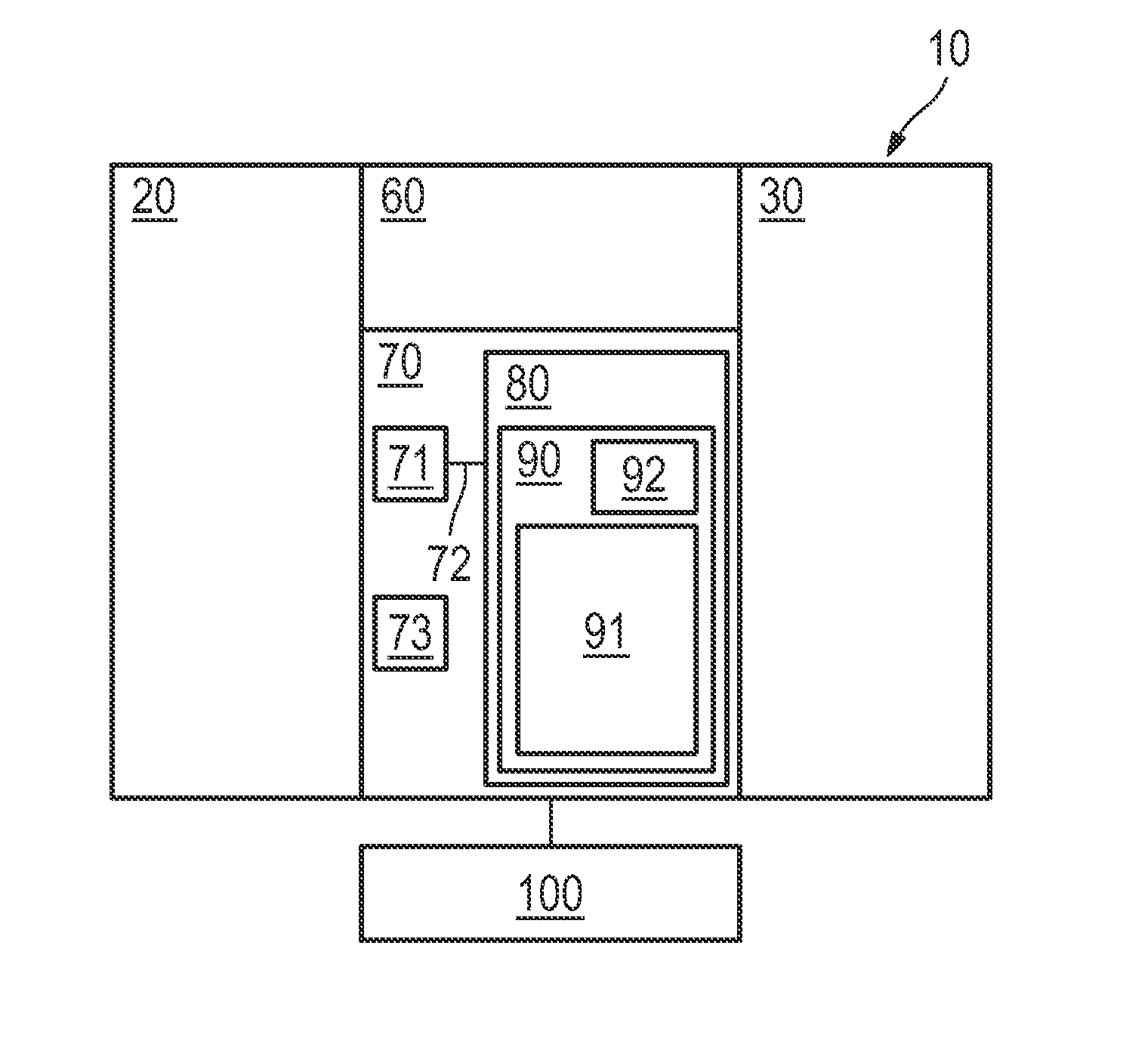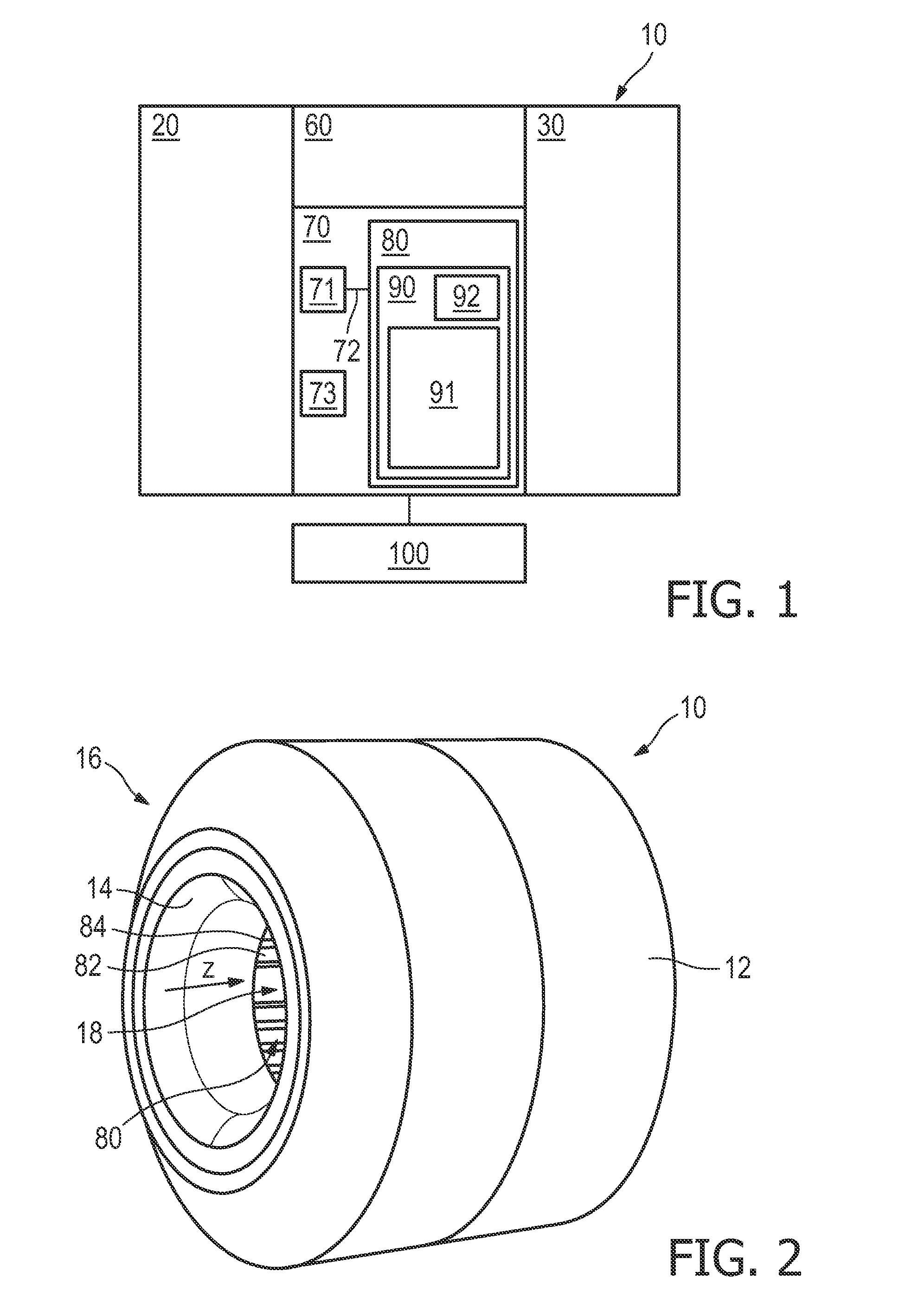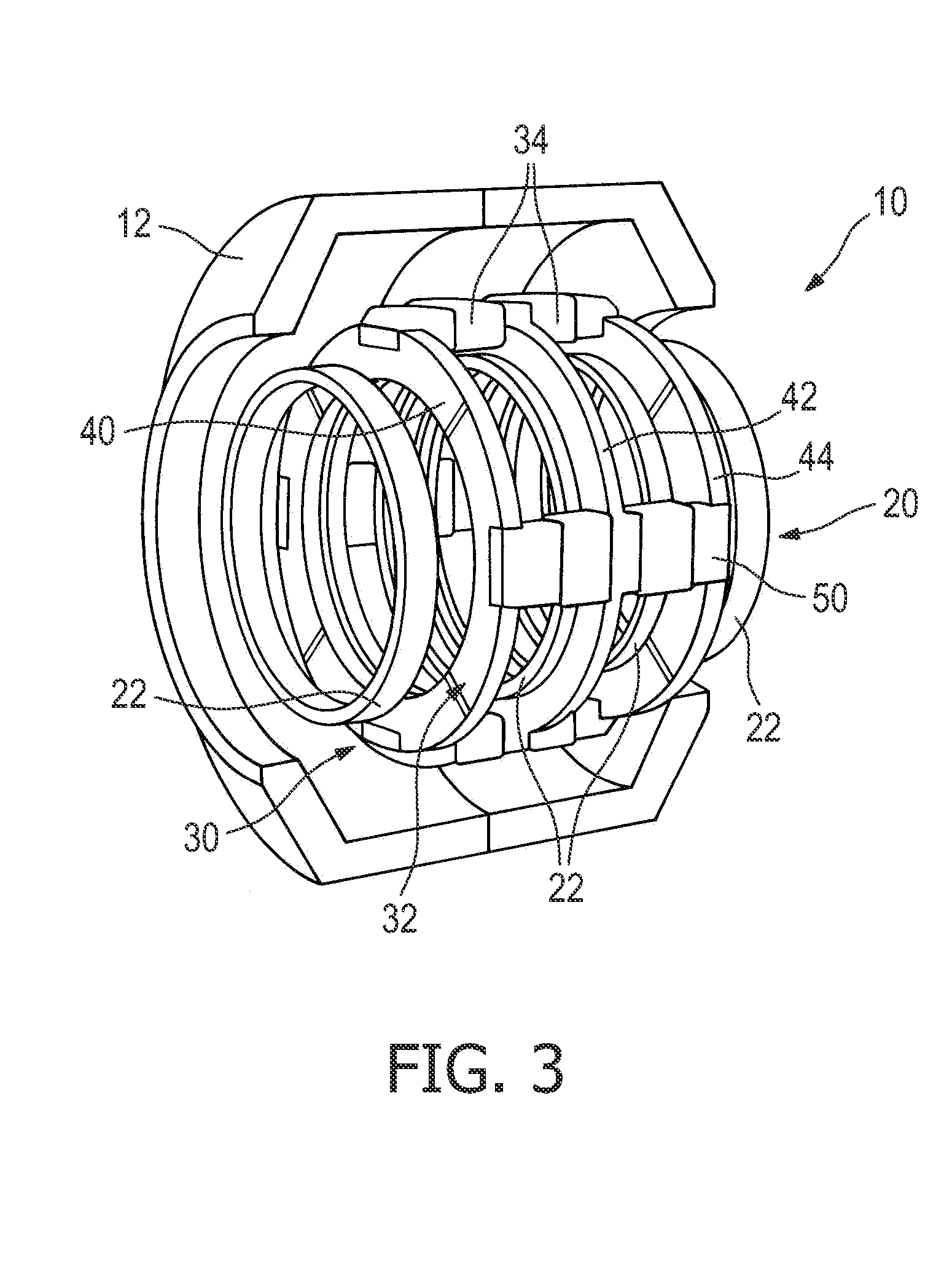Prevention quench in a magnetic resonance examination system
a magnetic resonance examination and quench technology, applied in the direction of measuring using nmr, superconducting magnets/coils, instruments, etc., can solve the problems of dynamic heat load, loss of dynamic ac in the windings of the main magnet coil, and increase the temperature of the main magnet, so as to achieve stable operation
- Summary
- Abstract
- Description
- Claims
- Application Information
AI Technical Summary
Benefits of technology
Problems solved by technology
Method used
Image
Examples
Embodiment Construction
[0033]As illustrated in FIG. 1, the magnetic resonance imaging (MRI) scanner 10 comprises a superconducting main magnet 20, which surrounds an examination region 18 (see FIG. 2) and generates a main magnetic field in the examination region 18. Furthermore the MRI scanner 10 comprises a magnetic field gradient system 30 that enables spatial localization of the MRI signals. The magnetic field gradient system 30 selectively causes alternating gradient magnetic fields in the examination region 18, and is disposed outside of the main magnet 20, as described below in more detail. Furthermore the MRI scanner 10 comprises a radio frequency (RF) system 60 that transmits energy and receives signal information, and a computer system 70 to control the scanner's components and subsystems.
[0034]With reference to FIGS. 2 and 3, the MRI scanner 10 includes a housing made up of an outer flux return shield 12 and an inner bore tube 14. The outer flux return shield 12 and the inner bore tube 14 are se...
PUM
 Login to View More
Login to View More Abstract
Description
Claims
Application Information
 Login to View More
Login to View More - R&D
- Intellectual Property
- Life Sciences
- Materials
- Tech Scout
- Unparalleled Data Quality
- Higher Quality Content
- 60% Fewer Hallucinations
Browse by: Latest US Patents, China's latest patents, Technical Efficacy Thesaurus, Application Domain, Technology Topic, Popular Technical Reports.
© 2025 PatSnap. All rights reserved.Legal|Privacy policy|Modern Slavery Act Transparency Statement|Sitemap|About US| Contact US: help@patsnap.com



